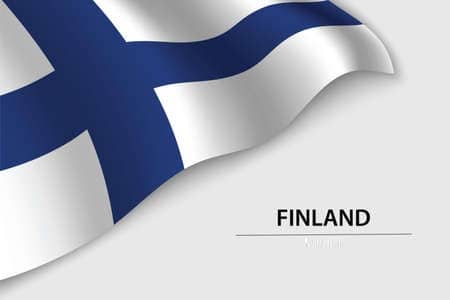Headlines
Finland Population, Official Language And More.

Finland was under Swedish rule from the late 12th century to 1809 when it was ceded to Russia as a result of the Finnish War. In 1917, Finland declared independence from Russia and became a republic. During World War II, Finland fought two wars against the Soviet Union: The Winter War (1939–1940) and the Continuation War (1941–1944).
After World War II, Finland remained neutral in its relations with the Soviet Union but developed close ties with the West. In recent years, Finland has become known for its high standard of living and social welfare system.

Finland
THE POPULATION
Finland has a population of approximately 5.5 million people. The population is concentrated in the southern part of the country, with the majority of people living in urban areas. The largest city in Finland is Helsinki, which is also the capital city.
THE LAND MARK
Finland is known for its thousands of lakes and extensive forests. The country has a total area of 338,424 square kilometers. The highest point in Finland is Halti, which stands at 1,324 meters above sea level.
THE OFFICIAL LANGUAGE
The official languages of Finland are Finnish and Swedish. Finnish is spoken by the majority of the population, while Swedish is spoken by a minority of people living in coastal areas.
THE CULTURE
Finland has a rich cultural heritage that includes music, literature, art, and architecture. The country is known for its contributions to classical music, with famous composers such as Jean Sibelius and Einojuhani Rautavaara hailing from Finland. Finnish literature has also gained international recognition, with authors such as Tove Jansson and Arto Paasilinna achieving worldwide fame.
THE ECONOMIC STABILITY
Finland has a highly industrialized economy that is heavily dependent on exports. The country’s main exports include electronics, machinery, paper and pulp, and chemicals. Finland has a highly skilled workforce and invests heavily in research and development. The country has a high standard of living and is known for its social welfare system.
THE GDP
Finland has a mixed economy that combines a free market with a Nordic welfare state model. In 2021, the gross domestic product (GDP) in Finland amounted to over 251 billion euros. The high economic output per capita is similar to that of other Western European economies, such as Germany, Austria, and Sweden.
THE CURRENCY
The official currency of Finland is the Euro.
THE FOOD
Finnish cuisine is known for its simplicity and use of fresh ingredients. Some popular Finnish dishes include karjalanpaisti (Karelian hot pot), kalakukko (fish pie), and lihapullat (meatballs).
MAJOR CITIES
The largest city in Finland is Helsinki, which is also the capital city. Other major cities in Finland include Espoo, Vantaa, Tampere, Turku, and Oulu.
MAJOR AIRPORTS AND SEAPORTS
The major airport in Finland is the Helsinki Airport, which is located in the capital city of Helsinki. Other airports in Finland include the Oulu Airport and the Turku Airport. The major seaports in Finland are the Port of Helsinki and the Vuosaari Port.
SCHOOLS
Finland has a highly developed education system that emphasizes equal opportunities for all students. The country has a comprehensive network of schools that includes primary schools, secondary schools, vocational schools, and universities. Some notable universities in Finland include the University of Helsinki, Aalto University, and Tampere University.





